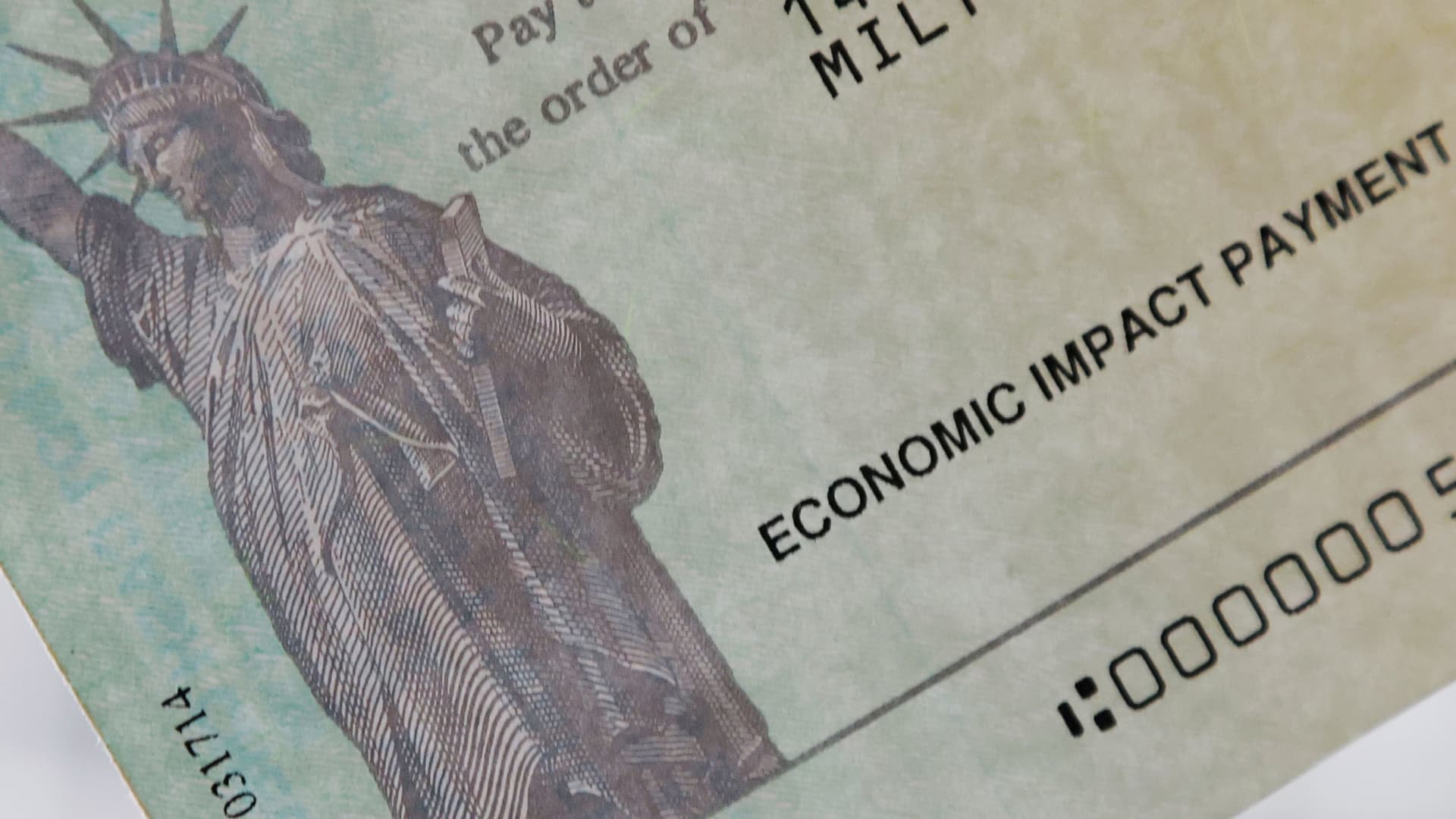Products You May Like
When the U.S. began to shut down the wake of the onset of Covid-19, it meant millions of families were suddenly without the income they needed.
Within weeks, Congress passed a massive emergency aid package aimed at providing relief. In that legislation were “economic impact payment” checks amounting to up to $1,200 per eligible adult.
There have been a total of three rounds of such checks — including additional payments of up to $600 and $1,400 per person in 2021 — referred to as “stimulus checks” by many Americans.
While the government had deployed stimulus checks before — particularly in the wake of the Financial Crisis — the size and scope of the direct checks was in many ways a new experiment.
More from Personal Finance:
Annuity sales buoyed by market fears, higher interest rates
How to use a 529 college savings plan if student debt’s forgiven
Here’s how to fight a higher-than-expected property tax bill
“The three of them together were massively bigger than what the government had done before,” said Howard Gleckman, senior fellow at the Urban-Brookings Tax Policy Center.
With each stimulus check, the IRS and the U.S. Department of the Treasury became faster and more efficient at deploying the money.
In the initial few weeks of the first stimulus check program in 2020, the IRS deployed 89.5 million payments.
When a third stimulus check was approved by Congress on March 11, 2021, the IRS announced on March 17 it had already disbursed about 90 million payments.
“Overall, the IRS gets credit,” Gleckman said. “They just did an extraordinary job in getting these checks out in very difficult circumstances.”
To be sure, there were glitches along the way, including some initial checks that were sent to deceased Americans.
Experts also say the money could have been more targeted, as some well-to-do taxpayers who were unaffected financially by the pandemic also received money.
“There was a trade-off between speed and accuracy,” said Erica York, senior economist and research manager at the Tax Foundation.
“The payments were not as targeted as they could have been if lawmakers had other options,” York said. “A higher priority for lawmakers was getting relief out fast because of the nature of the pandemic.”
About 90% of taxpayers received money regardless of whether they were experiencing financial hardship, she said.
The third $1,400 checks phased out more quickly in an effort to limit how much people with higher incomes received.
As the payments were deployed, there was a drop in the number of households actually spending them, according to York. While the first checks were mostly devoted to household spending, the later checks were more typically used for saving or paying down debt – a trend seen across all income levels.
Missing payments
One issue that persisted throughout the deployment of the stimulus checks, and then again with monthly child tax credit payments, was reaching non-tax filers who do not typically submit returns because their incomes are too low.
In January 2021, President Joe Biden issued an executive order to renew government efforts to find the estimated 8 million people who were still without checks.
While the number may have been reduced with additional outreach, it is possible some people may have still fallen through the cracks.
There was just no easy way for them to get the money.Dorian Warrenco-president of Community Change
“It was really, really difficult to get money into the hands of the most vulnerable, people that are transient or unbanked or folks with little to no internet access, particularly in rural areas,” said Dorian Warren, co-president of Community Change, a national organization focused on helping low-income Americans, particularly people of color.
“There was just no easy way for them to get the money,” he said.
Moreover, those people may have hesitated to sign up for payments, due to the complexity of the forms or fear and shame associated with the IRS, Warren said.
Too much aid?
For much of 2020, Capitol Hill lawmakers were at odds over whether to send additional payments. Former President Donald Trump advocated for a round of $2,000 checks. So did then President-elect Biden.
But Washington leaders bargained down to $600 per person for the second round, which led to another legislative package with $1,400 payments to top those off after Biden was elected.
Those last checks happened just as the economy was about to improve.
“With the benefit of hindsight, you could say it was probably unnecessary,” Gleckman said of the third round of checks. “But I think at the time it was a reasonable call.”
Now that the U.S. has record high inflation, some argue the stimulus money could have fueled those issues.
“There’s inflation across the board, and the U.S. is experiencing kind of a uniquely higher inflation,” York said. “I think it’s driven by not just the stimulus payments themselves, but the size of the relief overall.”
Yet Gleckman argues the surge in prices has been affected by supply rather than demand issues — and those problems aren’t directly connected to the stimulus money.
That includes constraints on factory workers due to the pandemic, problems with shipping from overseas and now the Russia-Ukraine war, which led to additional bottlenecks.
“It’s a little too convenient to blame inflation on excessive stimulus payments,” Gleckman said. “Not that they had nothing to do with this, but they don’t have as much to do with this as some people would suggest.”
